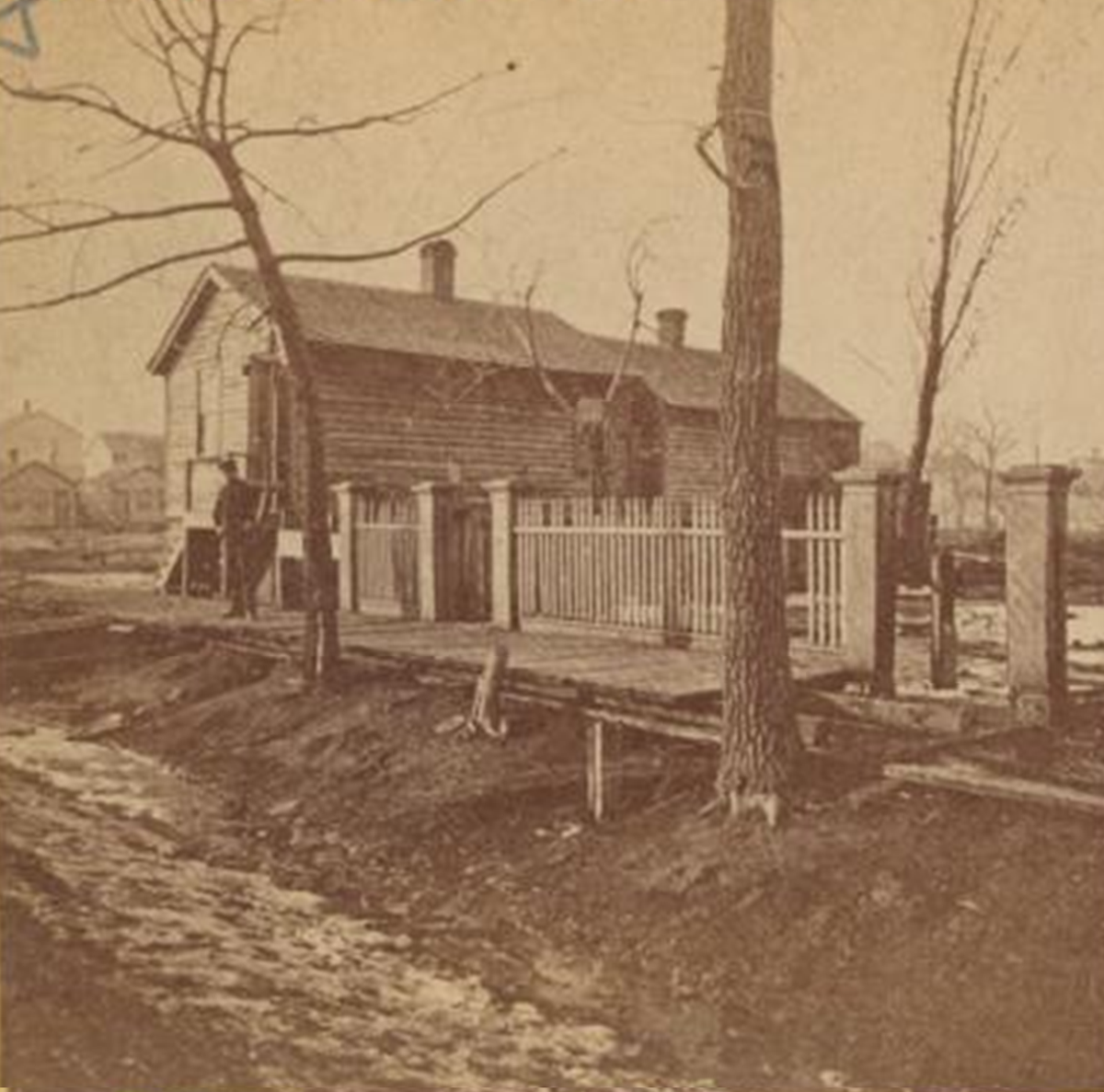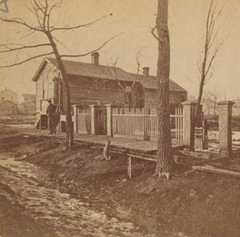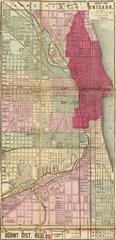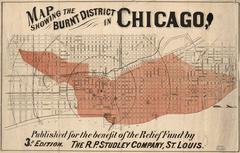
Great Chicago Fire Sites: Visiting Hours, Tickets, and Historical Information
Date: 14/06/2025
Introduction
The Great Chicago Fire of 1871 is a cornerstone of American urban history—a disaster that destroyed much of Chicago but ultimately catalyzed its transformation into a global architectural and cultural capital. As you explore the city today, you’ll find a tapestry of historic sites, museums, and memorials that preserve the memory of the fire and celebrate Chicago’s resilience. This guide offers detailed historical context, practical visitor information, and curated itineraries to help you plan an enriching journey through the city’s fire-related landmarks.
Table of Contents
- Historical Overview of the Great Chicago Fire
- Essential Sites to Visit
- Tours, Events, and Planning Your Visit
- Accessibility, Travel Tips, and Amenities
- Frequently Asked Questions (FAQ)
- Suggested Itinerary
- Summary and Visitor Resources
- References
Historical Overview of the Great Chicago Fire
On October 8, 1871, a blaze ignited at the O’Leary family barn on DeKoven Street, rapidly engulfing 3.3 square miles of Chicago. Over 17,000 buildings were destroyed, nearly 100,000 residents were displaced, and about 300 lives were lost (Britannica; Wikipedia; National Geographic). The city’s reliance on wood construction, drought conditions, and inadequate firefighting resources contributed to the disaster’s scale (FireRescue1; Smithsonian Magazine).
Yet, the fire’s aftermath marked an extraordinary period of urban renewal. New building codes required fire-resistant materials, and pioneering architects introduced innovations that set the stage for Chicago’s famed skyline (Archinect; Chicago Magazine). The city’s social and political fabric also changed, with relief efforts, shifts in governance, and a new civic spirit underpinning its “Great Rebuilding” (Chicago Beautiful; Aurora Regional Fire Museum).
Essential Sites to Visit
Chicago Water Tower & Pumping Station
The Chicago Water Tower (806 N. Michigan Ave.) is the most iconic survivor of the fire. Built in 1869, this limestone tower withstood the flames and stands as a symbol of resilience. Next door, the Chicago Avenue Pumping Station also survived and now houses the Lookingglass Theatre.
- Hours: Water Tower open daily, 10:00 am–7:00 pm (may vary by season).
- Tickets: Free admission to both the exterior and City Gallery inside.
- Tip: Visit the commemorative plaques and the rotating art exhibitions in the City Gallery. The Pumping Station’s public hours depend on theater events—check the official site.
Chicago Fire Academy and “Tongues of Flame” Sculpture
At 558 W. DeKoven St., the Chicago Fire Academy marks the fire’s origin. Outside stands the “Tongues of Flame” sculpture, commemorating the site where the blaze began.
- Hours: The outdoor sculpture and marker are accessible year-round.
- Tickets: Free to visit the exterior; the Academy itself is not open for public tours.
- Tip: Pair this stop with a walk through the South Loop’s other historic sites.
Chicago History Museum
The Chicago History Museum (1601 N. Clark St.) houses the city’s most comprehensive Great Chicago Fire exhibit, “City on Fire: Chicago 1871.” Artifacts, survivor stories, and interactive displays—including a 40-foot cyclorama—bring the fire’s history to life (greatchicagofire.org).
- Hours: Tuesday–Sunday, 9:30 am–4:30 pm (closed Mondays; check for holiday hours).
- Tickets: $19 for adults, with discounts for students, seniors, and children; Illinois residents receive reduced rates.
- Tip: Watch for free museum days and special fire anniversary events.
St. James Cathedral
St. James Cathedral (65 E. Huron St.) is another rare survivor. The fire-blackened top of its tower remains visible today as a testament to the disaster’s reach.
- Hours: Open daily; check their website for service times and special events.
- Tickets: Free.
- Tip: Look for interpretive signage detailing the fire’s impact.
The Last Wooden Street
A short stretch of wooden block pavement on The Last Wooden Street (between Astor and State Streets) offers a glimpse of pre-fire Chicago construction.
- Hours: Open to the public at all times.
- Tickets: Free.
- Tip: The surface can be uneven; wear sturdy shoes.
Tours, Events, and Planning Your Visit
- Guided Tours: The Chicago History Museum, Great Chicago Fire Tours, and the Chicago Architecture Center offer walking and bus tours of fire-related sites and post-fire architecture.
- Self-Guided: Download maps and audio guides from greatchicagofire.org or the Chicago History Museum.
- Annual Events: Each October, museums and historical societies host lectures, walking tours, and reenactments commemorating the fire (chicago1871.org; Chicago Beautiful).
Accessibility, Travel Tips, and Amenities
- Wheelchair Access: The Chicago History Museum and Water Tower are accessible; some outdoor sites, like The Last Wooden Street, may be less so.
- Transit: Major sites are near CTA train and bus stops (e.g., Red Line to Water Tower, Brown Line to History Museum). Divvy bike-share is convenient for getting around.
- Restrooms: Available in the Chicago History Museum and along Michigan Avenue.
- Dining: The Magnificent Mile and Lincoln Park offer diverse food options. For a historic treat, try Margie’s Candies.
- Photography: Allowed at most sites, but check restrictions in museums.
- Safety: These sites are in well-trafficked neighborhoods; standard city precautions apply.
- Weather: Dress in layers and prepare for changing conditions, especially when walking between sites.
Frequently Asked Questions (FAQ)
Q: What are the visiting hours for major sites?
A: The Chicago Water Tower is generally open daily 10 am–7 pm; the Chicago History Museum operates Tuesday–Sunday, 9:30 am–4:30 pm. Outdoor markers are accessible anytime. Confirm hours on official websites before visiting.
Q: Are tickets required?
A: Most outdoor sites are free. The Chicago History Museum charges admission, with discounts available.
Q: Are guided tours available?
A: Yes, both guided and self-guided tours are widely available through museums and local tour companies.
Q: Are sites accessible for those with mobility challenges?
A: The Chicago History Museum and Water Tower are accessible; some outdoor historic surfaces may be uneven.
Q: Is the area safe for tourists?
A: Yes; these sites are located in safe, central neighborhoods.
Suggested Itinerary
Morning:
- Visit the “Tongues of Flame” sculpture at the Chicago Fire Academy site.
Midday: - Explore the Chicago Water Tower and City Gallery.
Afternoon: - Tour the Chicago History Museum’s fire exhibits.
Evening: - Take an architecture river cruise to see the skyline shaped by the “Great Rebuilding.”
This route provides a comprehensive overview of the Great Fire’s origins, its survivors, and the legacy of innovation that followed.
Summary and Visitor Resources
Exploring the Great Chicago Fire sites provides a powerful window into Chicago’s transformation from devastation to rebirth. By planning your visit around site hours, ticket options, and accessibility, you’ll experience the best of Chicago’s rich history, resilience, and architectural achievement.
For a seamless experience, download the Audiala mobile app for guided audio tours and interactive maps. Explore our related articles on Chicago’s architecture and walking tours, and follow us on social media for the latest visitor tips.
Start planning your visit today and walk in the footsteps of Chicago’s remarkable history.
References
- Chicago Fire of 1871, Britannica
- Great Chicago Fire, Wikipedia
- Chicago Fire 1871 and Great Rebuilding, National Geographic
- Visit the Site Where the Great Chicago Fire Started, Practical Chicago
- City of Chicago History, Chicago.gov
- The Impact of the Great Chicago Fire on the City, Chicago Beautiful
- The Great Chicago Fire at 150, Archinect
- Great Chicago Fire Tours
- The Great Chicago Fire Origin Controversy, FireRescue1
- Remnants of the Great Chicago Fire, Smithsonian Magazine
- Chicago History Museum, Chicago1871.org
- Chicago Magazine: How the Great Fire Changed Chicago
- Aurora Regional Fire Museum: Great Chicago Fire
- Choose Chicago: Filming Locations and Historic Sites
- The Collector: Must-See Historical Sites Chicago
- Lonely Planet: Historical Places in Chicago
- Chicago1871.org
- Hop Chicago: Exploring Chicago’s Historic Neighborhoods and Landmarks
- Attractions of America: Best Museums Chicago
- Full Suitcase: 2 Days in Chicago
- Travelarii: Chicago’s Top Tourist Landmarks
































































































































































